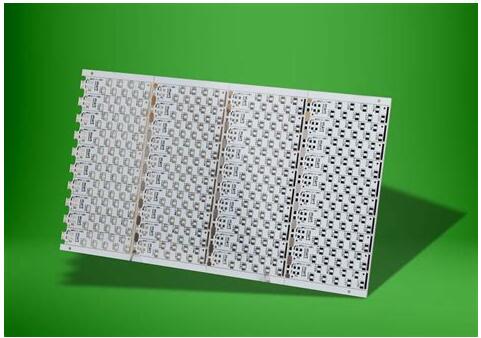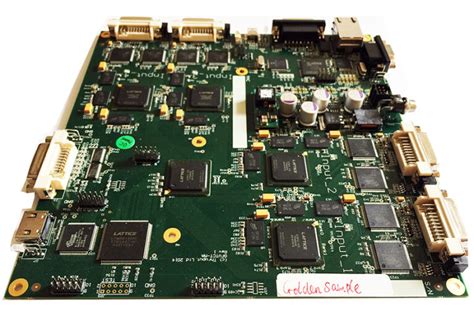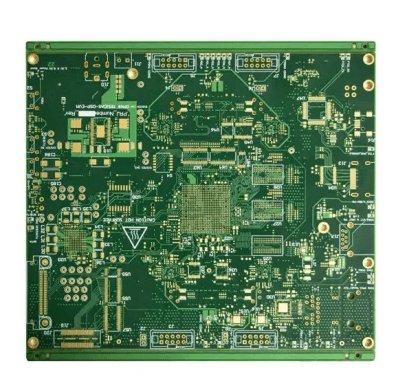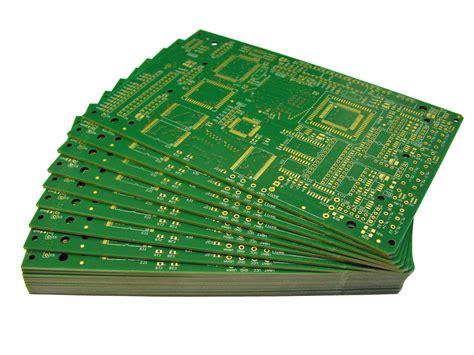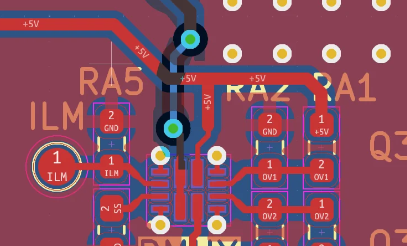How to Solder Aluminum in PCB: A Comprehensive Guide
Introduction to Aluminum Soldering in PCB Applications
Soldering aluminum in printed circuit board (PCB) applications presents unique challenges that differentiate it from working with more conventional materials like copper. Aluminum’s natural oxide layer, high thermal conductivity, and different metallurgical properties require specialized techniques for successful soldering. This 2000-word guide will explore the complete process of soldering aluminum in PCB contexts, covering preparation, material selection, techniques, and troubleshooting.
While aluminum isn’t as commonly used in PCBs as copper due to its soldering difficulties, there are situations where aluminum soldering becomes necessary—particularly in high-power electronics, LED applications, and certain aerospace or automotive components where aluminum’s lightweight and thermal properties are advantageous. Understanding how to properly solder aluminum can expand your PCB fabrication and repair capabilities significantly.
Understanding the Challenges of Soldering Aluminum
Before attempting to solder aluminum in PCB work, it’s crucial to understand why this process is more challenging than soldering copper:
- Oxide Layer Formation: Aluminum rapidly forms a stable oxide layer (Al₂O₃) when exposed to air. This layer is chemically inert and prevents solder from wetting the aluminum surface.
- High Thermal Conductivity: Aluminum conducts heat extremely well, making it difficult to maintain the localized heat needed for soldering.
- Different Thermal Expansion Coefficient: Aluminum expands at a different rate than most solder materials and PCB substrates, potentially creating mechanical stress.
- Intermetallic Compound Formation: The interface between solder and aluminum can form brittle intermetallic compounds that may weaken the joint over time.
- Galvanic Corrosion Risk: When aluminum contacts other metals in the presence of an electrolyte (even humidity), it can corrode rapidly due to its position in the galvanic series.
These factors make conventional soldering techniques ineffective for aluminum and require modified approaches.

Preparation for Aluminum Soldering in PCB Work
Material Selection
- Aluminum Type: Not all aluminum alloys solder equally. For PCB work:
- 1000 series (99% pure aluminum) solders most easily
- 3000 and 5000 series can be soldered with proper techniques
- Avoid 2000 and 7000 series as they’re particularly difficult
- Solder Choice: Standard tin-lead or lead-free solders won’t adhere well to aluminum. Specialized solders are required:
- Zinc-based solders (Zn-Sn, Zn-Cd, or Zn-Al)
- Aluminum-specific soldering alloys (often containing silicon)
- Low-temperature aluminum solders (for heat-sensitive components)
- Flux Selection: You must use a flux specifically formulated for aluminum:
- Highly active fluxes containing fluorides or chlorides
- No-clean fluxes are generally not effective
- Flux must withstand the higher temperatures needed for aluminum soldering
Surface Preparation
Proper surface preparation is critical for successful aluminum soldering in PCB applications:
- Mechanical Cleaning:
- Use fine abrasive paper (400-600 grit) to remove the oxide layer
- Scotch-Brite pads can be effective for small areas
- Immediately after cleaning, proceed to soldering—the oxide layer reforms in minutes
- Chemical Cleaning:
- Specialized aluminum cleaners/etchants can prepare the surface
- Acid-based solutions (phosphoric, sulfuric, or chromic acid) work well
- Always neutralize and rinse thoroughly after chemical treatment
- Protective Coatings:
- Some technicians apply a thin layer of nickel or zinc (via plating or galvanizing) to make soldering easier
- These coatings provide a more solderable surface while maintaining aluminum’s bulk properties
Soldering Techniques for Aluminum in PCB Applications
Tool Selection and Setup
- Soldering Iron:
- Use a high-wattage iron (60-100W minimum) due to aluminum’s thermal conductivity
- Temperature-controlled stations set to 350-450°C (662-842°F) typically work best
- Chisel or wedge tips are preferable for better heat transfer
- Additional Equipment:
- Preheater for the PCB (to reduce thermal shock)
- Fume extraction (aluminum fluxes can be more corrosive than standard fluxes)
- Micro-abrasion tools for localized surface preparation
Step-by-Step Soldering Process
- PCB and Component Preparation:
- Clean the entire PCB area around the aluminum connection point
- If working with aluminum components, ensure they’re clean and oxide-free
- Apply flux specifically designed for aluminum to both surfaces
- Heat Management:
- Preheat the aluminum part to 150-200°C (302-392°F) if possible
- This reduces the thermal gradient and makes soldering easier
- For large aluminum parts on PCBs, consider localized heating with a hot air station
- Soldering Technique:
- Apply the soldering iron tip to both the aluminum and PCB pad simultaneously
- Feed the specialized aluminum solder into the joint, not directly to the iron
- The solder should flow onto the aluminum surface when properly prepared
- Keep the iron in place slightly longer than with copper (2-4 seconds typically)
- Joint Formation:
- Look for proper wetting—the solder should spread, not bead up
- For through-hole components, ensure solder flows through to the opposite side
- For surface-mount, create fillets that connect component to pad adequately
- Post-Soldering Cleanup:
- Remove flux residues thoroughly (aluminum fluxes are often more corrosive)
- Use appropriate cleaners (isopropyl alcohol may not be sufficient)
- Inspect for proper joint formation and any signs of cold solder joints

Alternative Methods for Aluminum Connections in PCBs
When conventional soldering proves too challenging, consider these alternative approaches:
- Mechanical Connections:
- Clinch joints or stake connections
- Specialized aluminum-compatible conductive adhesives
- Pressure contacts with appropriate surface treatments
- Ultrasonic Soldering:
- Uses ultrasonic vibrations to disrupt the oxide layer during soldering
- Effective for small aluminum components on PCBs
- Requires specialized equipment
- Laser Soldering:
- Provides precise, localized heating
- Can be automated for production environments
- High equipment cost but excellent results
- Bonding with Conductive Adhesives:
- Epoxy-based adhesives containing metallic particles
- Lower temperature process avoids thermal damage
- May have higher resistance than soldered joints

Quality Control and Testing
After soldering aluminum in your PCB assembly, implement these quality checks:
- Visual Inspection:
- Check for proper wetting and fillet formation
- Look for signs of incomplete oxide removal (beading solder)
- Verify no flux residues remain in sensitive areas
- Mechanical Testing:
- Gentle tug test for through-hole components
- Shear testing for surface-mount parts (when applicable)
- Check for brittleness in the joint
- Electrical Testing:
- Continuity checks with multimeter
- Resistance measurement across the joint
- In-circuit testing for functional verification
- Environmental Stress Testing (for critical applications):
- Thermal cycling to check for joint integrity
- Humidity exposure testing for corrosion resistance
- Vibration testing for mechanical stability
Troubleshooting Common Aluminum Soldering Issues
- Solder Not Adhering to Aluminum:
- Likely cause: Oxide layer not properly removed
- Solution: Improve surface preparation, work faster after cleaning
- Excessive Heat Damage to PCB:
- Likely cause: Prolonged heating attempting to make solder flow
- Solution: Pre-heat aluminum components, use higher wattage iron briefly
- Brittle Joints:
- Likely cause: Wrong solder alloy or excessive intermetallic formation
- Solution: Use appropriate aluminum solder, minimize heating time
- Corrosion After Soldering:
- Likely cause: Flux residues not properly cleaned
- Solution: Use appropriate cleaners, consider protective coatings
- Lifted Pads:
- Likely cause: Thermal stress during soldering
- Solution: Improve heat management, use lower temperature solder if possible
Best Practices for Reliable Aluminum Soldering in PCBs
- Work Quickly: Complete the soldering process within minutes of surface preparation.
- Maintain Cleanliness: Keep all tools and materials free from contamination.
- Practice First: Experiment with scrap aluminum and PCBs before working on actual assemblies.
- Document Parameters: Record successful combinations of temperatures, solder alloys, and fluxes.
- Consider Alternatives: For high-reliability applications, evaluate whether aluminum is truly necessary or if other connection methods would be better.
- Environmental Control: Work in low-humidity conditions when possible to minimize oxide formation.
Advanced Techniques for Production Environments
For those working with aluminum in PCB manufacturing:
- Nitrogen Atmosphere Soldering: Reduces oxide formation during the process.
- Automated Flux Application: Ensures consistent coverage for production runs.
- In-line Cleaning Systems: Handles the more aggressive flux residues efficiently.
- Selective Soldering Machines: Can be programmed with aluminum-specific profiles.
- Laser Surface Preparation: Provides consistent oxide removal before soldering.
Safety Considerations
Working with aluminum soldering presents unique safety concerns:
- Flux Fumes: Aluminum fluxes often contain more hazardous components—use proper ventilation.
- High Temperatures: The increased temperatures required can create more burn hazards.
- Chemical Handling: Surface preparation chemicals may be corrosive or toxic.
- Metal Particles: Aluminum dust can be flammable—keep work area clean.
- Electrical Safety: Higher wattage irons increase shock risks—ensure proper grounding.
Future Developments in Aluminum Soldering for Electronics
The electronics industry continues to develop better methods for aluminum soldering:
- Improved Solder Alloys: Research into new compositions that bond better with aluminum.
- Nanocoating Technologies: Thin coatings that prevent oxide formation without compromising conductivity.
- Low-temperature Techniques: Methods that reduce thermal stress on components.
- Environmentally Friendly Fluxes: Less corrosive formulations that remain effective.
- Automated Solutions: Robotics and AI-assisted soldering for consistent aluminum joints.
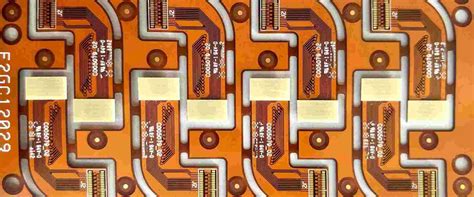
Conclusion
Soldering aluminum in PCB applications is undoubtedly challenging but entirely possible with the right knowledge, materials, and techniques. By understanding aluminum’s unique properties, investing in appropriate soldering alloys and fluxes, and implementing careful surface preparation and heat management, you can create reliable aluminum connections on printed circuit boards.
The key takeaways for successful aluminum soldering in PCB work are:
- Never underestimate the importance of surface preparation
- Use materials specifically designed for aluminum
- Manage heat carefully to balance oxide prevention and PCB protection
- Implement thorough cleaning and inspection procedures
- Consider alternative connection methods when appropriate
As aluminum continues to grow in importance for various electronic applications due to its advantageous properties, mastering aluminum soldering techniques will become an increasingly valuable skill for PCB technicians and engineers. With practice and attention to detail, you can overcome aluminum’s soldering challenges and expand your electronic fabrication capabilities.

